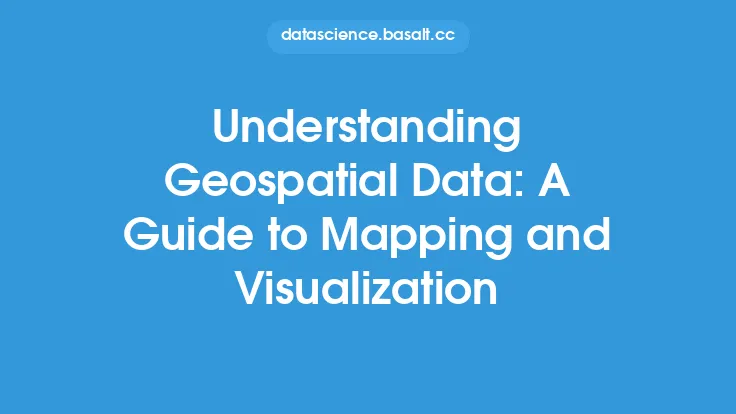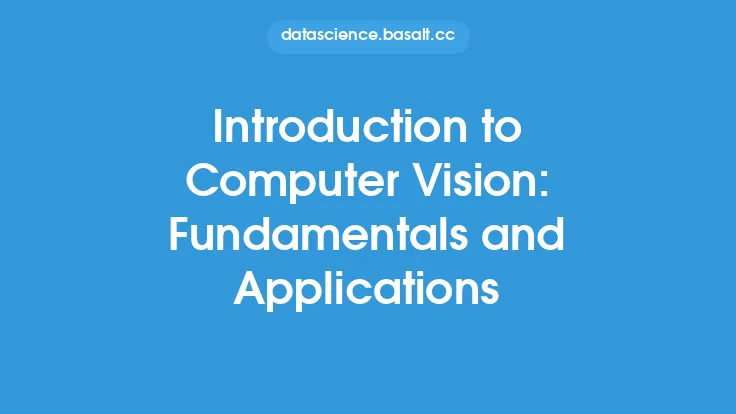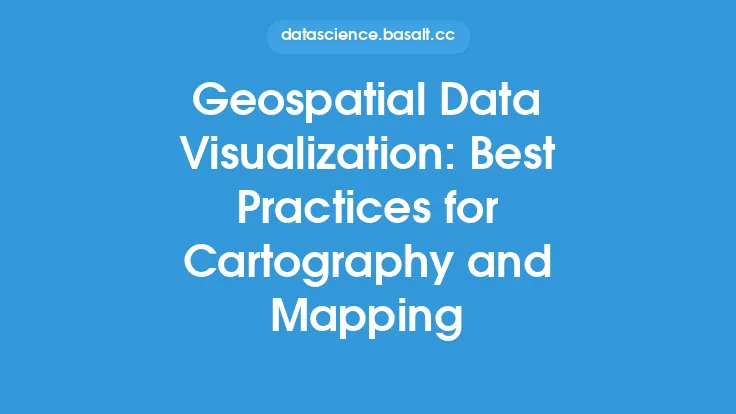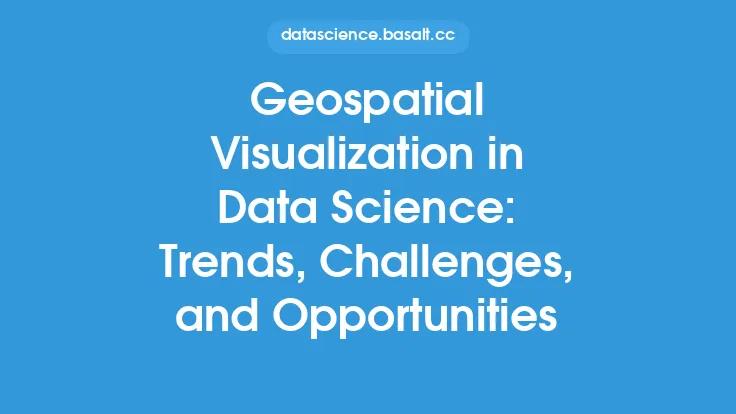Geospatial visualization is a crucial aspect of data visualization that deals with the representation of geographically referenced data in a visual format. This field has gained significant importance in recent years due to the increasing availability of geospatial data and the need to analyze and understand complex spatial relationships. Geospatial visualization enables users to explore, analyze, and communicate spatial data effectively, making it an essential tool for various fields such as urban planning, environmental monitoring, transportation, and emergency response.
Key Concepts in Geospatial Visualization
Geospatial visualization involves several key concepts that are essential for understanding and working with spatial data. These concepts include spatial reference systems, coordinate systems, projections, and spatial data models. A spatial reference system is a framework that defines the relationship between locations on the Earth's surface and a set of coordinates. Coordinate systems, such as latitude and longitude, are used to assign unique coordinates to each location on the Earth's surface. Projections are methods used to represent the curved surface of the Earth on a flat map, and spatial data models are used to represent and store spatial data in a computer.
Types of Geospatial Visualizations
There are several types of geospatial visualizations, each with its own strengths and weaknesses. These include 2D maps, 3D visualizations, and interactive visualizations. 2D maps are the most common type of geospatial visualization and are used to represent spatial data on a flat surface. 3D visualizations are used to represent spatial data in three dimensions, allowing users to explore and analyze complex spatial relationships. Interactive visualizations enable users to interact with the data in real-time, allowing for more effective exploration and analysis.
Geospatial Visualization Tools and Technologies
Several tools and technologies are available for creating geospatial visualizations, including geographic information systems (GIS), computer-aided design (CAD) software, and programming libraries such as Leaflet and D3.js. GIS software, such as ArcGIS and QGIS, provide a comprehensive set of tools for creating, editing, and analyzing spatial data. CAD software, such as AutoCAD and SketchUp, are used to create detailed 3D models of buildings and infrastructure. Programming libraries, such as Leaflet and D3.js, provide a flexible and customizable way to create interactive geospatial visualizations.
Applications of Geospatial Visualization
Geospatial visualization has a wide range of applications across various fields, including urban planning, environmental monitoring, transportation, and emergency response. In urban planning, geospatial visualization is used to analyze and visualize population growth, land use patterns, and infrastructure development. In environmental monitoring, geospatial visualization is used to track and analyze climate change, deforestation, and pollution. In transportation, geospatial visualization is used to optimize routes, manage traffic flow, and plan new infrastructure. In emergency response, geospatial visualization is used to respond to natural disasters, track disease outbreaks, and manage emergency resources.
Challenges and Limitations of Geospatial Visualization
Despite the many benefits of geospatial visualization, there are several challenges and limitations that need to be addressed. These include data quality and availability, scalability and performance, and user experience and interaction. Data quality and availability are critical issues in geospatial visualization, as poor data quality can lead to inaccurate or misleading visualizations. Scalability and performance are also important considerations, as large datasets can be difficult to visualize and interact with. User experience and interaction are critical factors in geospatial visualization, as users need to be able to easily navigate and understand the visualizations.
Future Directions of Geospatial Visualization
The field of geospatial visualization is rapidly evolving, with new technologies and techniques emerging all the time. Some of the future directions of geospatial visualization include the use of artificial intelligence and machine learning, the integration of Internet of Things (IoT) data, and the development of virtual and augmented reality visualizations. Artificial intelligence and machine learning can be used to automate the analysis and visualization of spatial data, while IoT data can provide real-time insights into spatial phenomena. Virtual and augmented reality visualizations can provide immersive and interactive experiences, allowing users to explore and analyze spatial data in new and innovative ways.
Best Practices for Geospatial Visualization
To create effective geospatial visualizations, several best practices need to be followed. These include using clear and simple visualizations, providing context and metadata, and using interactive and dynamic visualizations. Clear and simple visualizations are essential for communicating complex spatial relationships, while context and metadata are necessary for understanding the data and its limitations. Interactive and dynamic visualizations enable users to explore and analyze the data in real-time, allowing for more effective communication and decision-making.
Conclusion
Geospatial visualization is a powerful tool for analyzing and communicating spatial data, with a wide range of applications across various fields. By understanding the key concepts, types, and tools of geospatial visualization, users can create effective visualizations that communicate complex spatial relationships. However, there are also several challenges and limitations that need to be addressed, including data quality and availability, scalability and performance, and user experience and interaction. As the field of geospatial visualization continues to evolve, new technologies and techniques will emerge, providing new opportunities for innovation and discovery.





